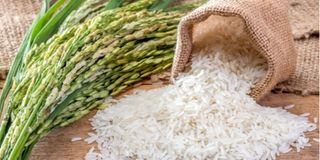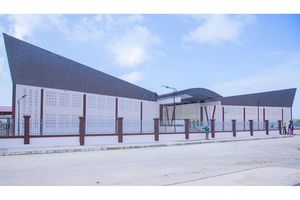Africa struggling to reduce dependency on imported Indian rice

What you need to know:
- Many African countries depend on imports, and the market has been roiled by restrictions imposed in September by India
Dak. Outside Dak village in central Senegal women sing and dance as they scythe through rice stalks with sickle or knife. The harvest is underway in the west African nation, but there will not be enough for everyone.
Many African countries depend on imports -- and the market has been roiled by restrictions imposed in September by India.
In a bid to control domestic prices affected by a crippling drought, the leading global rice exporter banned exports of broken rice and slapped a 20 percent export tax on some non-basmati varieties.
In several African countries that rely on imported rice, self-sufficiency has become a buzzword.
"The risk (of a rice shortage) in Senegal is for real," said Waly Diouf, coordinator of a programme aimed at ending foreign dependence on this staple.
"We don't want to buy imported rice anymore, it's very expensive," said Dieteo Diouf, who runs a women's association at Dak, in the central region of Fatick.
Fish and rice, or ceebu jen in the Wolof language, is the most popular dish in Senegal and UNESCO has even put it on the list of humanity's intangible cultural heritage.
Rice became a major staple after French colonialists seeking a new outlet shipped it from Indochina during the 19th century, to the detriment of local subsistence farming.
Panic and speculation
Africa accounts for 13 percent of the world population but 32 percent of global rice imports, according to Africa Rice, a research centre set up by 28 nations and based in Abidjan.
"Local rice production covers only about 60 percent of current demand in sub-Saharan Africa, which means 14-15 million tonnes are imported annually," the centre said.
India's move to restrict exports caused panic in several countries, notably the Indian Ocean Comoros islands. A quarter of its 890,000 people live under the poverty line of two euros a day per person.
Clashes broke out at the end of September as the price of a 25-kilogram sack of rice rose by almost a third.
On the east coast of the continent in Liberia, which also experiences intense poverty, big queues formed outside wholesalers as rumours spread of rice shortages.
That helped lift the price of a sack from just under $14 euros to over $24 in Liberia and saw the government issue a call for calm.
The Senegalese government recently intervened and fixed the price of one kilogram of Indian and Pakistani broken rice at 50 euro cents to avoid panic and try to halt speculation.
Broken rice is one of the cheapest available and almost the only one imported into Senegal, said Waly Diouf.
In 2008, the country suffered "hunger riots" over the spiralling cost of food.
New strategy
Over recent years Senegal has grown about 840,000 tonnes of rice annually, or some nine months of local consumption, Diouf said.
The country "imports on average 900,000 tonnes of rice. That is more than is needed but the imports keep the product available and avoid speculation," he added.
The aim is to reduce dependency on imports, mainly by increasing acreage under production.
"By 2030, rice consumption in Senegal is expected to reach 1.5 million tonnes," Diouf said.
"We have worked out a new strategy to move towards self-sufficiency. Financially it will cost around 1.37 billion FCFA ($2.22 million)," said Diouf.
Others say that many obstacles have to be overcome to meet this often-declared goal of self-sufficiency.
"We need more rice field areas, more credit, more combine harvesters, we need to rebuild our irrigation systems," said Mouhamadou Moustapha Diack, who heads the producers' union at Boundoum in the north.
The old dykes and water channels between the paddy fields are covered in lilies and eucalyptus.
Aside from quantity, the supposed lower quality rice grown in Senegal has for a long time put off some local consumers.
"That's changed," stated Birame Diouf, who runs a rice factory at Ross Bethio, in the north.
The plant removes impurities such as grit and tiny stones before the rice grains are swallowed up by huge cleaning tanks and transformed into whole or broken grains ready for cooking.
Senegal is hoping to follow the example of Ivory Coast where rice imports from India fell 24 percent from 2021 to 2022.
Abidjan's rice development agency Aderiz reports "clear progress" in substituting Ivorian rice for foreign imports.
Nigeria meanwhile has followed a different strategy and slapped heavy taxes on imported rice to try to boost local production.





